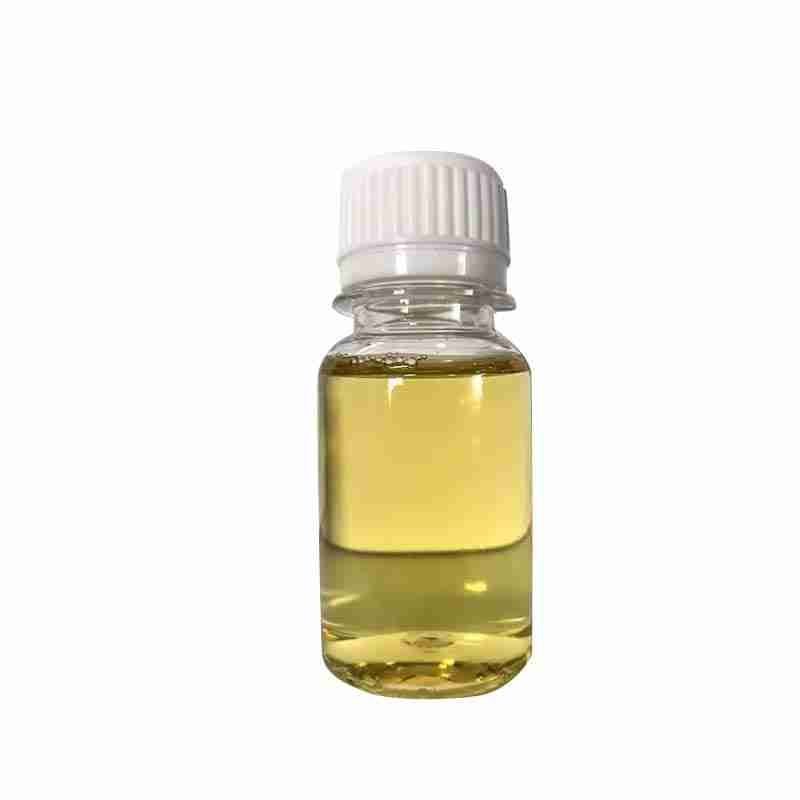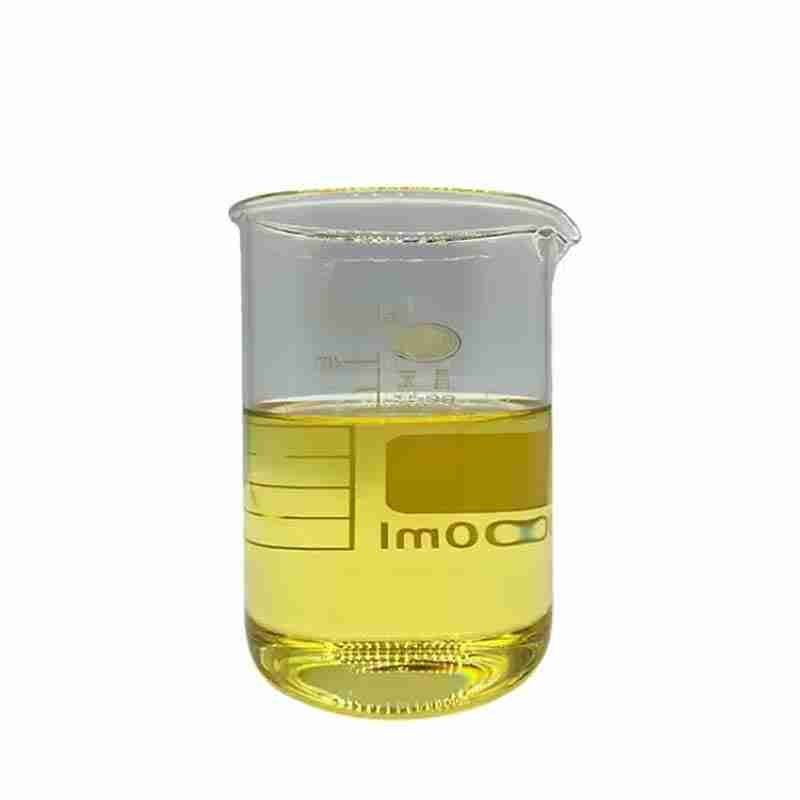Vitamin A Palmitate CAS# 79-81-2
Vitamin A ester derivatives mainly refer to its alkyl acid esters, such as vitamin A acetate, vitamin A palmitate, etc. Due to the instability of vitamin A, commercial vitamin A is available in the form of its ester. However, vitamin A acetate easily absorbs water and gets damp, while vitamin A palmitate is more stable than vitamin A acetate.
Vitamin A, commonly known as retinol, is an unsaturated monohydric alcohol with an ester ring. It is a yellow flaky crystal or crystalline powder. It is a fat-soluble vitamin. It is insoluble in water and glycerol, and soluble in alcohol, ether, hydrocarbon, Most organic solvents such as halogenated hydrocarbons. Retinol palmitate is an ester of retinol combined with palmitic acid, a saturated fatty acid that is the main component of palm oil. Retinyl palmitate is easily absorbed by the skin and then converted into retinol. It is a yellow or yellow-red solid or oily substance.
发送询盘
Vitamin A Palmitate CAS# 79-81-2
| Vitamin A palmitate Basic information |
| Product Name: | Vitamin A palmitate |
| Synonyms: | VITAMINAPALMITATE,LIQUIDINOIL,1MILLIONIU/G;VITAMINAPALMITATE,USP;[(2E,4E,6E,8E)-3,7-dimethyl-9-(2,6,6-trimethyl-1-cyclohexenyl)nona-2,4,6,8-tetraenyl] hexadecanoate;VITAMIN A PALMITATE(RETINYL PALMITATE)(RG);ALL-TRANS-RETINYLPALMITATE;VITAMIN-A-PALMITATE, STAB., 1750 U/MG;VITAMIN A PALMITATE LIQUID WITH TOCOPHERYL;all-trans-Retinol palmitate, VitaminA palmitate |
| CAS: | 79-81-2 |
| MF: | C36H60O2 |
| MW: | 524.86 |
| EINECS: | 201-228-5 |
| Product Categories: | BAYPRESS;Vitamins and derivatives;79-81-2 |
| Mol File: | 79-81-2.mol |
 |
|
| Vitamin A palmitate Chemical Properties |
| Melting point | 28-29?? |
| Boiling point | 546.51??C (rough estimate) |
| density | 0.9668 (rough estimate) |
| refractive index | 1.5250 (estimate) |
| Fp | 194?? |
| storage temp. | 2-8??C |
| solubility | Chloroform (Slightly), Ethyl Acetate (Slightly), Methanol (Very Slightly) |
| form | oil |
| Specific Gravity | 0.90??0.93 (20??) |
| color | Light Yellow to Yellow |
| Water Solubility | Soluble in chloroform, ether, and vegetable oils. Insoluble in water. |
| Merck | 13,10073 |
| BRN | 1917366 |
| BCS Class | 4 |
| Stability: | Light Sensitive |
| InChIKey | VYGQUTWHTHXGQB-YFAKFODJSA-N |
| LogP | 15.51 at 25?? |
| CAS DataBase Reference | 79-81-2(CAS DataBase Reference) |
| NIST Chemistry Reference | Vitamin a palmitate(79-81-2) |
| EPA Substance Registry System | Retinol, hexadecanoate (79-81-2) |
| Safety Information |
| Hazard Codes | T,Xn,F |
| Risk Statements | 63-53-61-11 |
| Safety Statements | 53-23-36/37/39-45-36/37-16-60 |
| RIDADR | UN1170 – class 3 – PG 2 – Ethanol, solution |
| WGK Germany | 3 |
| RTECS | VH6860000 |
| F | 8-10-23 |
| TSCA | Yes |
| HS Code | 29362100 |
| Toxicity | LD50 (10 day) in mice, rats (mg/kg): 6060, 7910 orally (Kamm) |
- 2
- 2-diallylpent-4-en-1-amine
- 4
- 95-16-9
- Ammonium sulfamate
- Benzothiazole
- cas:67889-00-3ح2
- cas:83524-75-8 | pigment black 32
- cas:928836-00-4 | 2
- cas:932745-70-5 | 4
- Chemical Minerals
- Coconut diethanolamide
- Daily Chemicals
- discount
- for sale
- General pvc resin
- hexyl D-glucoside
- in stock
- Lauramidopropyl betaine
- LAURIC ACID MONOETHANOLAMIDE
- Petroleum Additives
- Plasticiser
- Ploymers
- price
- PVC
- quotation
- Raw Materal
- Remove term: Petroleum Additives Petroleum Additive
- SODIUM ETHYL 2-SULFOLAURATE
Related Products
Chemical Name: Dehydrocholic acid
Synonyms: Acide dehydrocholique; Triketocholanic acid
CAS No.: 81-23-2
Molecular Formula: C24H34O5
Molecular Weight: 402.53
Appearance: Powder
Chemical Name: Potassium Castorate
CAS No.: 8013-05-6
Molecular Formula: C57H107K3O12
Molecular Weight: 1101.74718
Appearance: Yellow Liquid
Product name:Cyclopentane
Purity:96%
Appearance:White powder
Package:25kg/bag
Sample:Available
Polyhexamethylene guanidine hydrochloride, often abbreviated as PHMG-HCl, is a high molecular weight polymeric biguanide compound known for its potent antimicrobial properties. With a chemical structure that features a long chain of methylene groups bridged by guanidine units, PHMG-HCl is effective against a broad spectrum of microorganisms, including bacteria, viruses, and fungi.
This hydrochloride salt form of PHMG is highly soluble in water and is commonly used in various applications due to its non-irritant and non-toxic nature to human skin and mucous membranes. It is widely recognized for its ability to form a colorless and odorless solution, making it an ideal choice for use in personal care products, medical disinfectants, and water treatment processes.
The versatility of PHMG-HCl lies in its cationic nature, which allows it to bind to negatively charged microbial cell walls, disrupting their integrity and leading to cell death. This mechanism of action contributes to its effectiveness as a preservative and disinfectant. Moreover, its substantivity, or the ability to adhere to surfaces, enhances its long-lasting antimicrobial activity.
In summary, Polyhexamethylene guanidine hydrochloride is a reliable and efficient antimicrobial agent, pivotal in industries where hygiene and cleanliness are paramount, offering a safe and sustainable solution for microbial control.
3,4-Ethylenedioxythiophene is a synthetic organic compound characterized by its unique structure that includes a thiophene ring with ethylenedioxy substituents at the 3 and 4 positions. This compound is known for its potential applications in the synthesis of various organic materials, including pharmaceuticals and organic electronic devices such as sensors and solar cells. Its stability and reactivity make it a versatile intermediate in the chemical industry.
Chemical Name: Arabic gum
CAS No.: 9000-01-5
Appearance: powder
Terpene resin is a type of natural resin derived from terpenes, which are organic compounds found in various plants. It is known for its aromatic properties and is commonly used in the production of fragrances, flavorings, and as a component in adhesives and coatings within the chemical industry. Terpene resin offers a range of benefits, including enhancing the solubility of essential oils and providing a stable base for various applications. Its natural origin makes it a preferred choice for eco-friendly products.
Chemical Name: 1,1,2,2-Tetrachloroethane
Other Name: Tetrachlorethane
CAS No.: 79-34-5
Molecular Formula: C2H2Cl4
Molecular Weight: 167.85
Appearance: Liquid
Chemical Name: STODDARD SOLVENT
CAS No.: 64742-88-7
Appearance: Colorless or Light Yellow Liquid
N,N-Dimethylaniline is an organic compound with amine and methyl groups attached to a benzene ring. It is a colorless liquid with a characteristic amine odor. This compound is primarily used as a chemical intermediate in the synthesis of dyes, pigments, and polymers. Its reactivity makes it a valuable building block in the production of various organic compounds, particularly in the pharmaceutical and chemical industries.
Chemical Name: UV-120
Other Name: (2’,4’-Di-tert-butylphenyl 3,5-di-tert-butyl-4-hydroxybenzoate)
CAS No.: 4221-80-1
Molecular Fomula: C29H42O3
Molecular weight: 438.66
Assay: ≥99%(LC)
Ethylhexyl Palmitate is a skin-conditioning ester, derived from ethylhexanol and palmitic acid, that imparts moisturization and a smooth texture to cosmetic and personal care formulations. It is valued for its emollient properties, enhancing the sensory experience of skin care products.


















